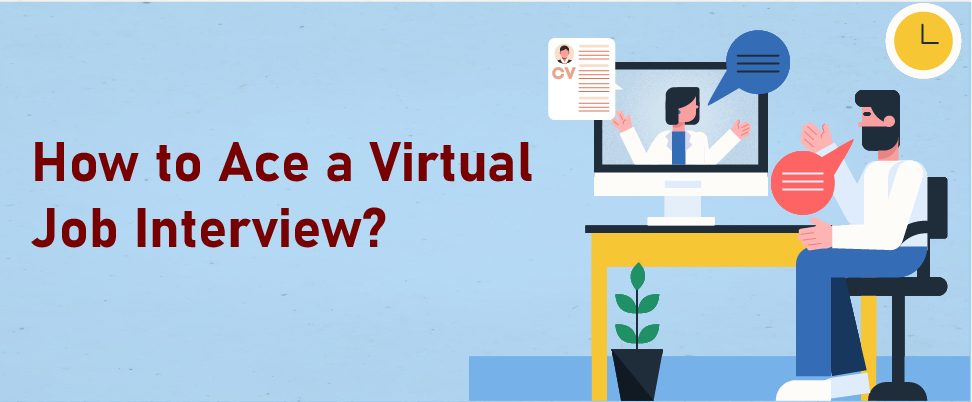Table of Contents
ToggleIntroduction
With the rise of remote work, virtual job interviews have become a staple in the hiring process. According to a recent survey by Gartner, 86% of organizations conducted virtual interviews in 2023, and this trend shows no signs of slowing down. As companies increasingly embrace remote work, mastering the art of virtual interviews is essential for job seekers. This blog will provide you with practical tips and strategies to navigate virtual interviews successfully, covering technology setup, body language, and follow-up practices.

Don't miss out on your chance to work with the best
Apply for top global job opportunities today!
Tips to Ace a Virtual Job Interview
Technology Setup
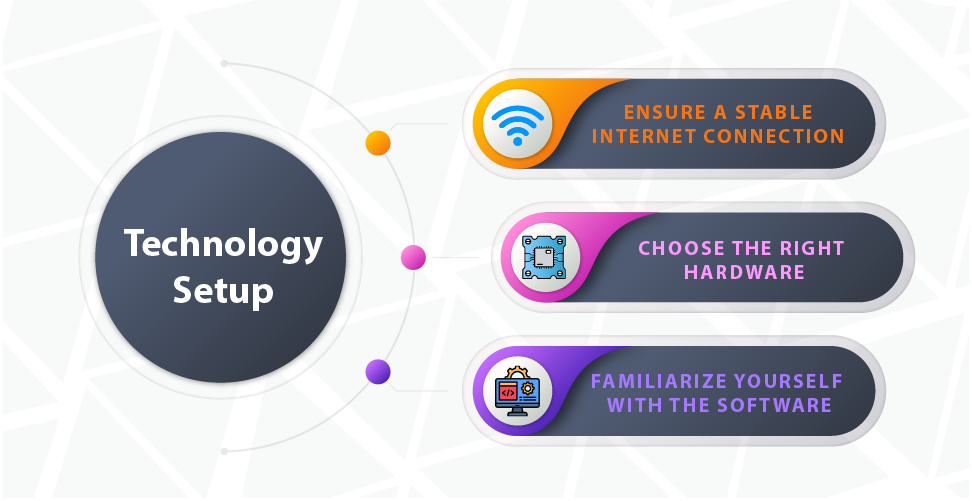
1. Ensure a Stable Internet Connection
A stable internet connection is crucial for a seamless interview experience. Test your internet speed and reliability ahead of time. If possible, use a wired connection to avoid potential Wi-Fi issues. Have a backup plan, such as a mobile hotspot, in case your primary connection fails.
2. Choose the Right Hardware
Use a high-quality webcam and microphone. Built-in laptop cameras and microphones can suffice, but external devices often provide better audio and video quality. Ensure your equipment is properly set up and tested before the interview.
3. Familiarize Yourself with the Software
Different companies may use different platforms for virtual interviews, such as Zoom, Microsoft Teams, or Google Meet. Download and install any necessary software in advance. Familiarize yourself with its features, such as screen sharing, muting, and video settings. Conduct a test call with a friend or family member to ensure everything works smoothly.
Professional Attire

1. Dress for Success
Even though you are interviewing from home, dressing professionally is essential. Wear business attire that is appropriate for the industry. This not only shows respect for the interview process but also helps put you in a professional mindset.
2. Avoid Distracting Patterns
Choose solid colours or subtle patterns for your clothing. Loud or busy patterns can be distracting and may not display well on camera. Ensure your attire contrasts well with your background.
Body Language
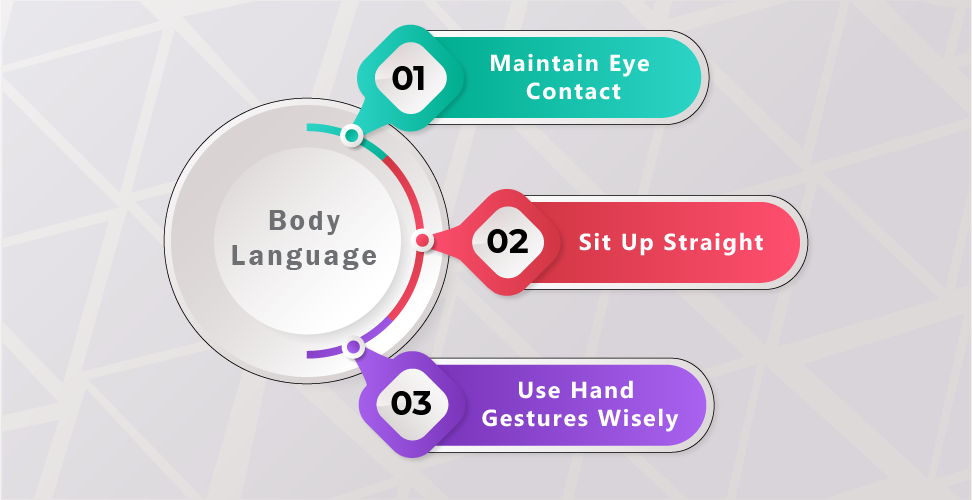
1. Maintain Eye Contact
Look directly into the camera to simulate eye contact with the interviewer. This can feel unnatural at first, but it creates a more engaging and personable interaction. Avoid staring at the screen or your own video feed.
2. Sit Up Straight
Good posture conveys confidence and professionalism. Sit up straight with your shoulders back, and avoid slouching or leaning too far forward. Position your camera at eye level to create a flattering angle and ensure you’re centered in the frame.
3. Use Hand Gestures Wisely
Hand gestures can add emphasis and expressiveness to your communication. However, avoid excessive or distracting movements. Keep your gestures within the frame and use them to complement your verbal responses.
Building Rapport
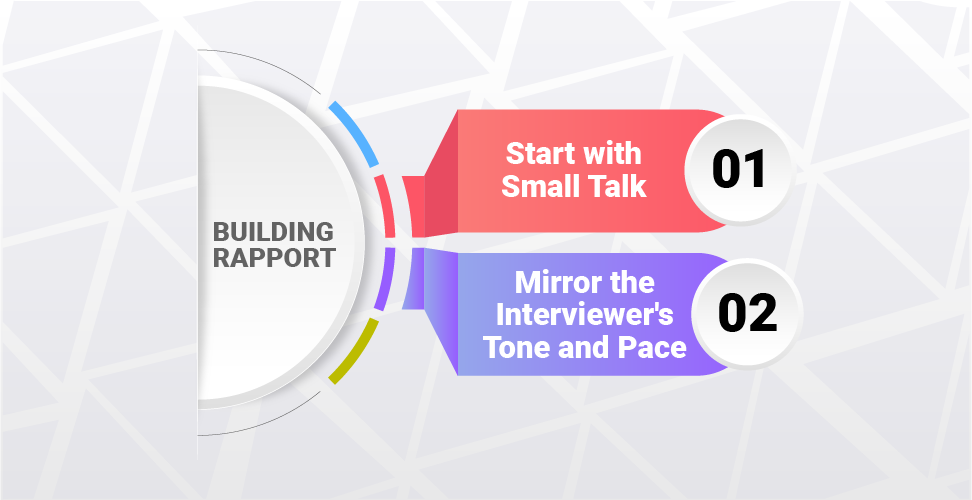
1. Start with Small Talk
Beginning the interview with a bit of small talk can help establish a connection and ease any initial tension. Comment on a common interest or something relevant to the role or company to break the ice.
2. Mirror the Interviewer’s Tone and Pace
Pay attention to the interviewer’s tone and pace, and try to mirror it. This technique can help create a sense of rapport and make the conversation feel more natural.
Preparation

1. Research the Company
Thoroughly research the company before the interview. Understand its mission, values, products, and recent news. This knowledge will enable you to tailor your responses and show that you are genuinely interested in the company.
2. Prepare Your Answers
Practice answering common interview questions, such as those about your background, strengths, weaknesses, and career goals. Use the STAR method (Situation, Task, Action, Result) to structure your responses for behavioral questions.
3. Prepare Questions to Ask
Prepare thoughtful questions to ask the interviewer. This shows your interest in the role and helps you gather important information about the company and the position.
Follow-Up Practices
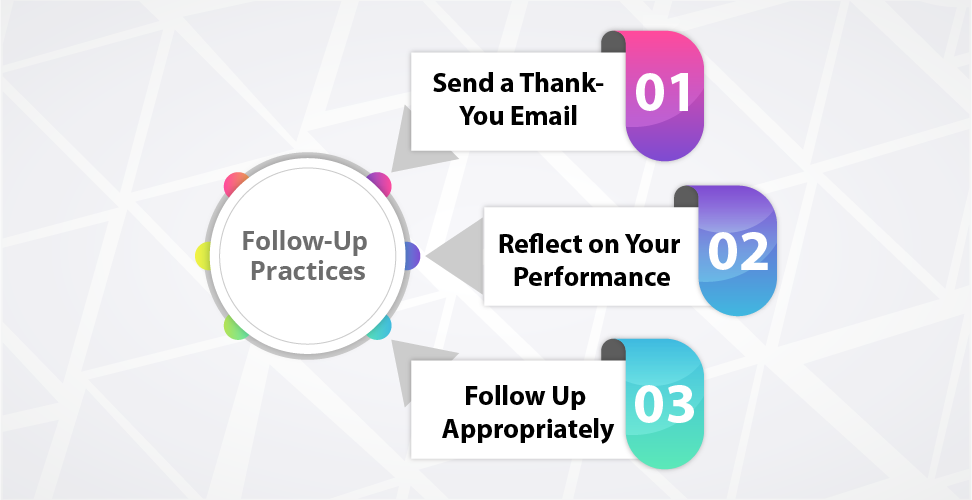
1. Send a Thank-You Email
Within 24 hours of the interview, send a personalized thank-you email to each interviewer. Express your gratitude for the opportunity, reiterate your interest in the position, and briefly mention a key point from the interview to reinforce your suitability.
2. Reflect on Your Performance
Take some time to reflect on your interview performance. Identify what went well and areas where you could improve. Use this reflection to refine your approach for future interviews.
3. Follow Up Appropriately
If you haven’t heard back within the timeline provided by the interviewer, follow up with a polite email to inquire about the status of your application. Demonstrate your continued interest and enthusiasm for the role.
Must Read: WHAT ARE THE TOP 10 IN-DEMAND JOBS IN INDIA? Conclusion
Virtual job interviews have become a critical component of the hiring process, and excelling in them can significantly impact your career prospects. By approaching virtual interviews with the same level of professionalism and preparation as in-person interviews, you can effectively showcase your skills and suitability for the role. Embrace the unique aspects of the virtual format, leverage technology to your advantage, and maintain clear and confident communication. With these strategies, you’ll be well-equipped to navigate the virtual interview landscape and make a lasting impression on potential employers.
Take control of your career and land your dream job
Sign up with us now and start applying for the best opportunities!


